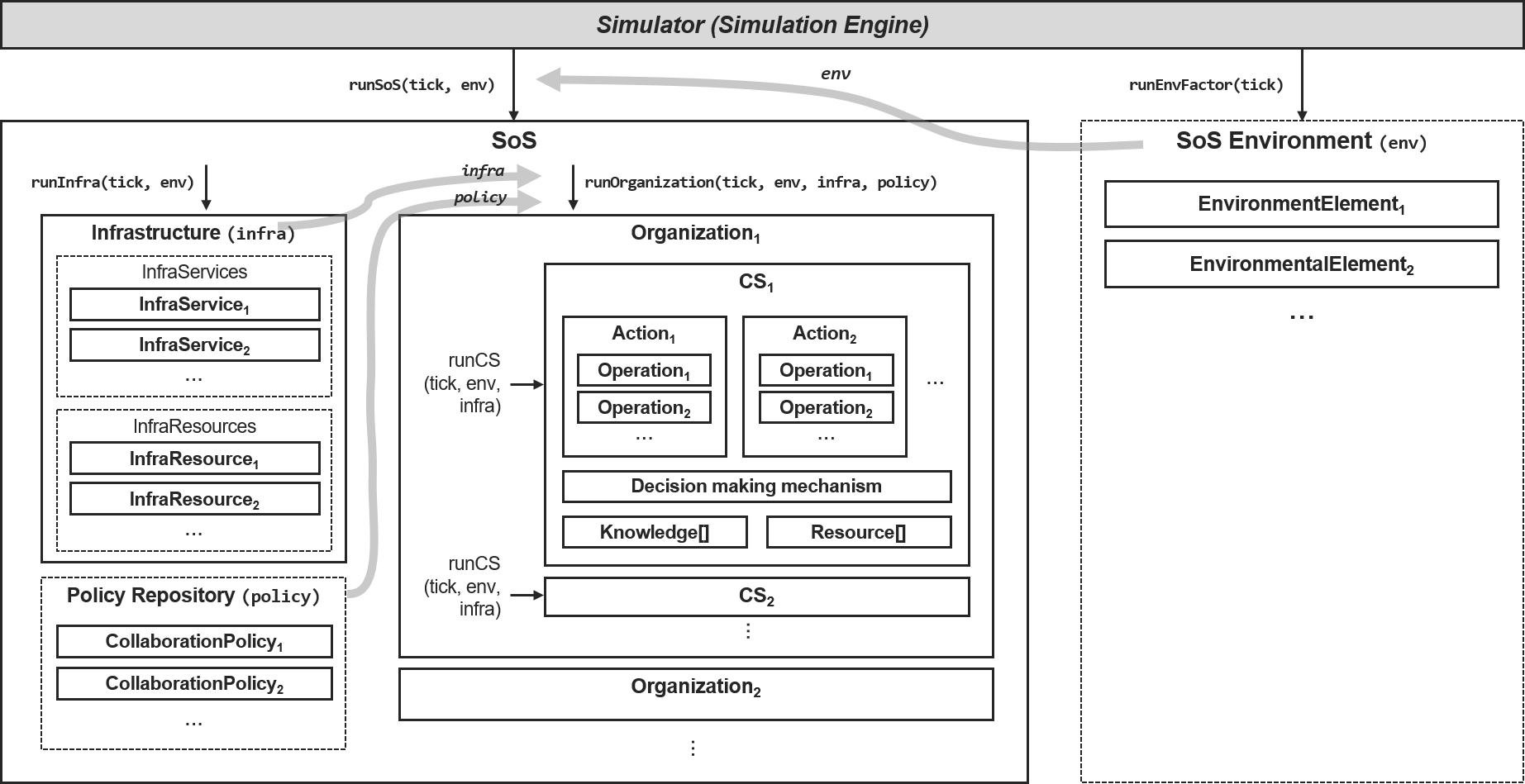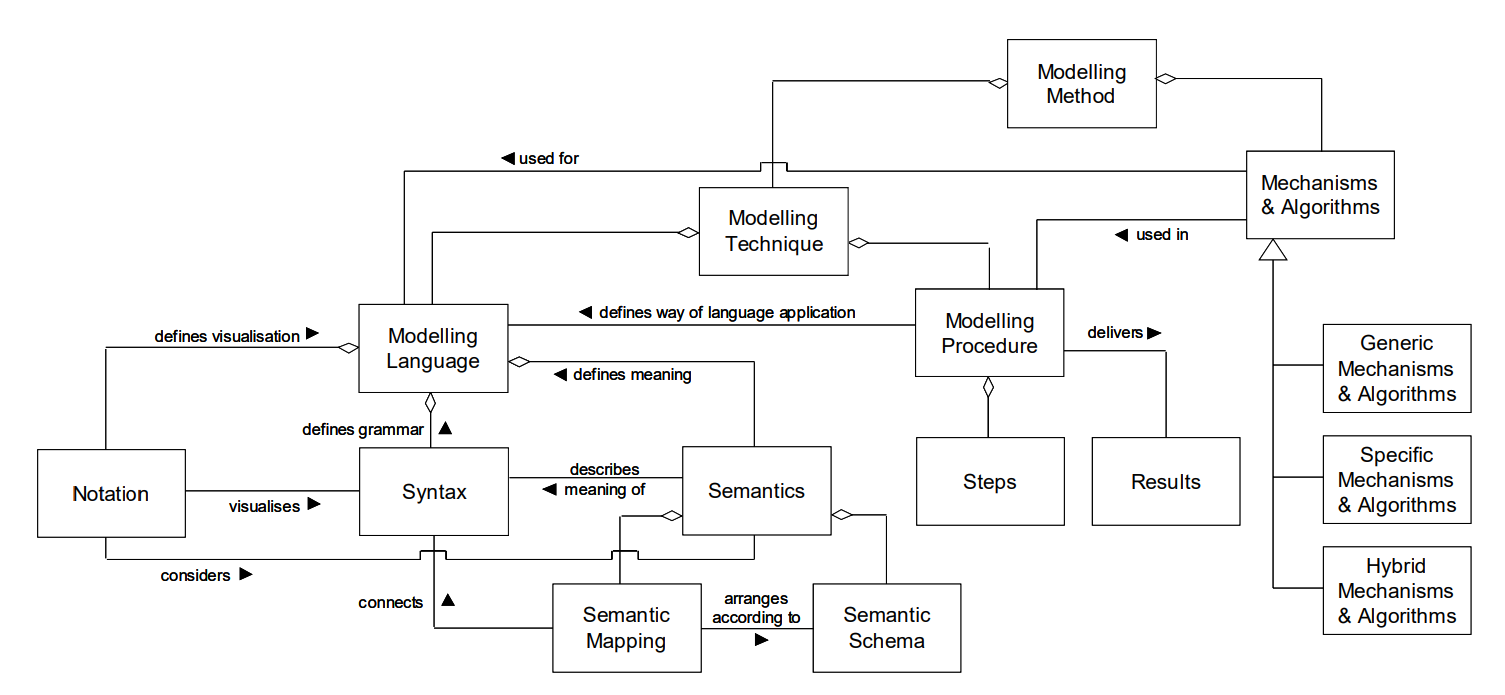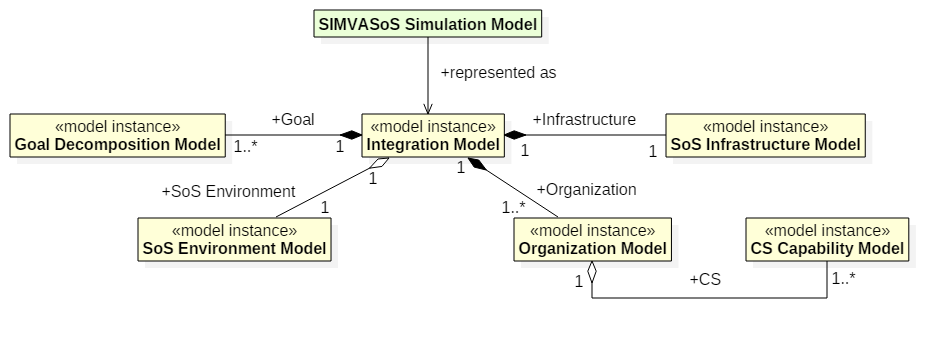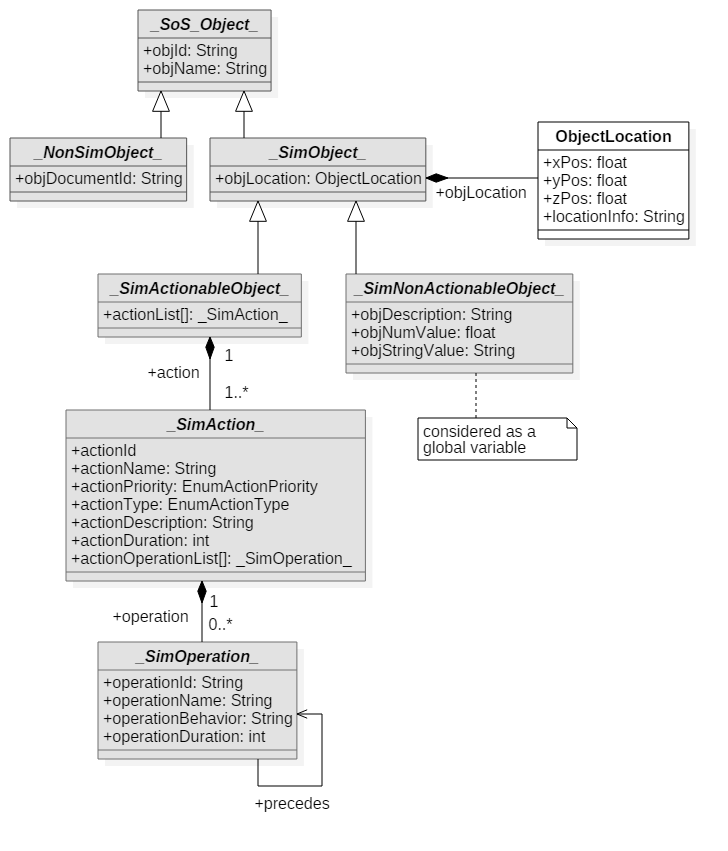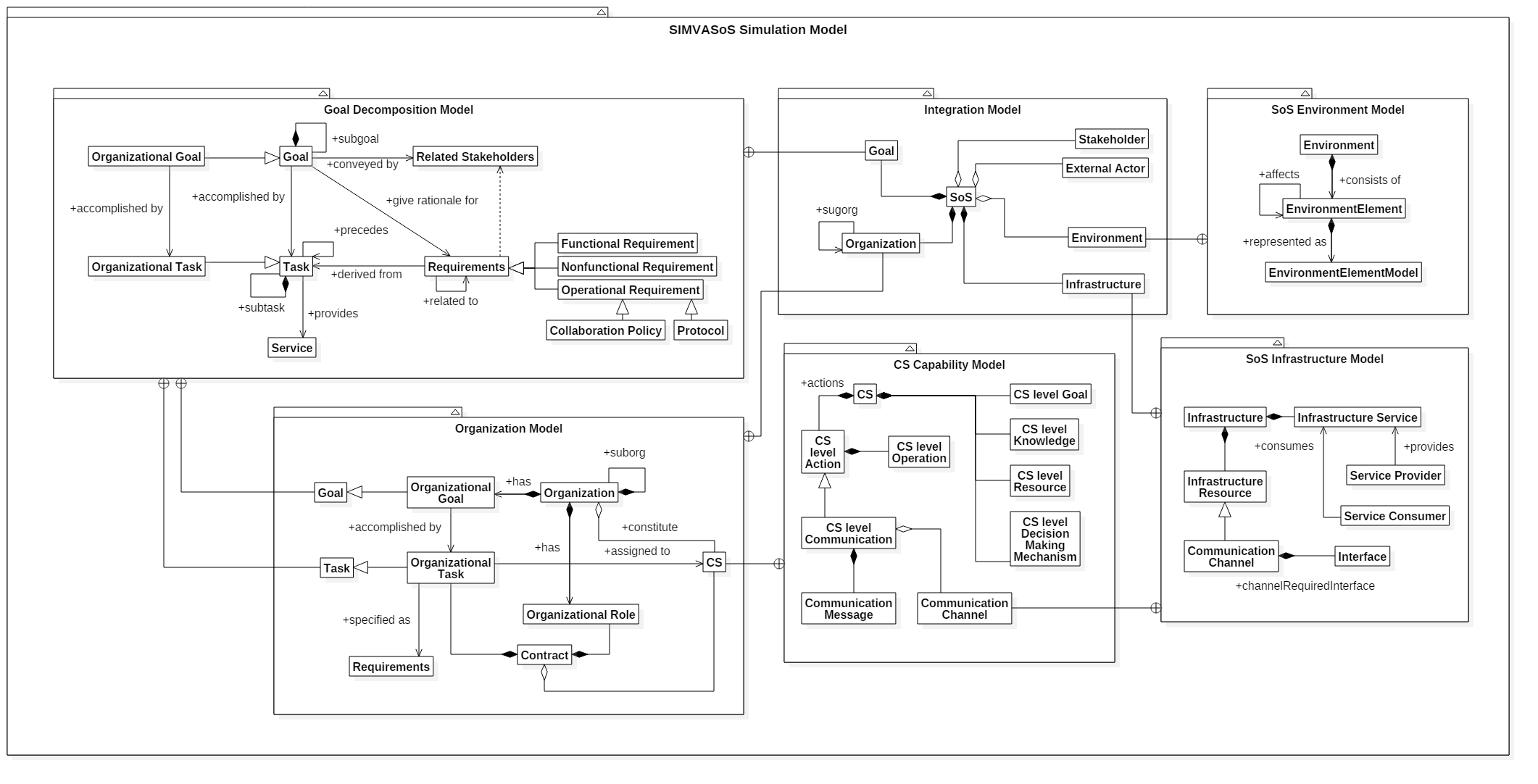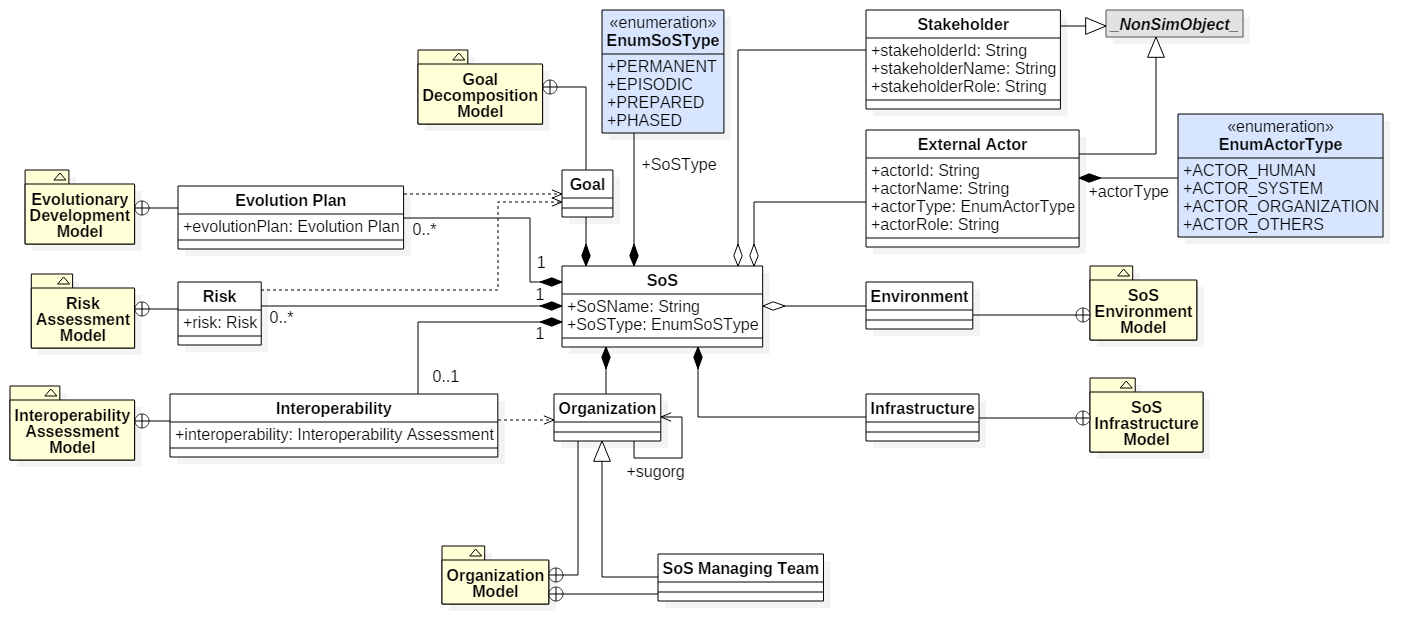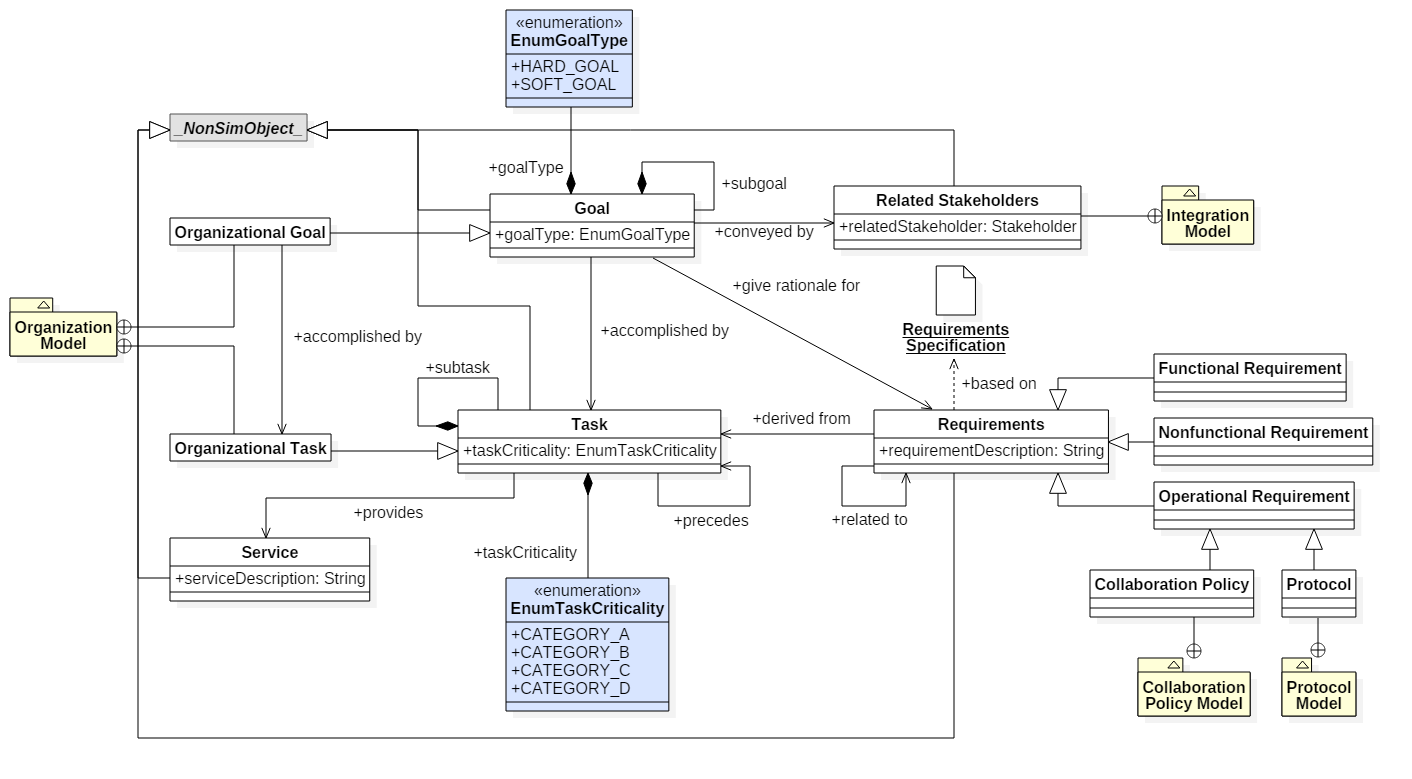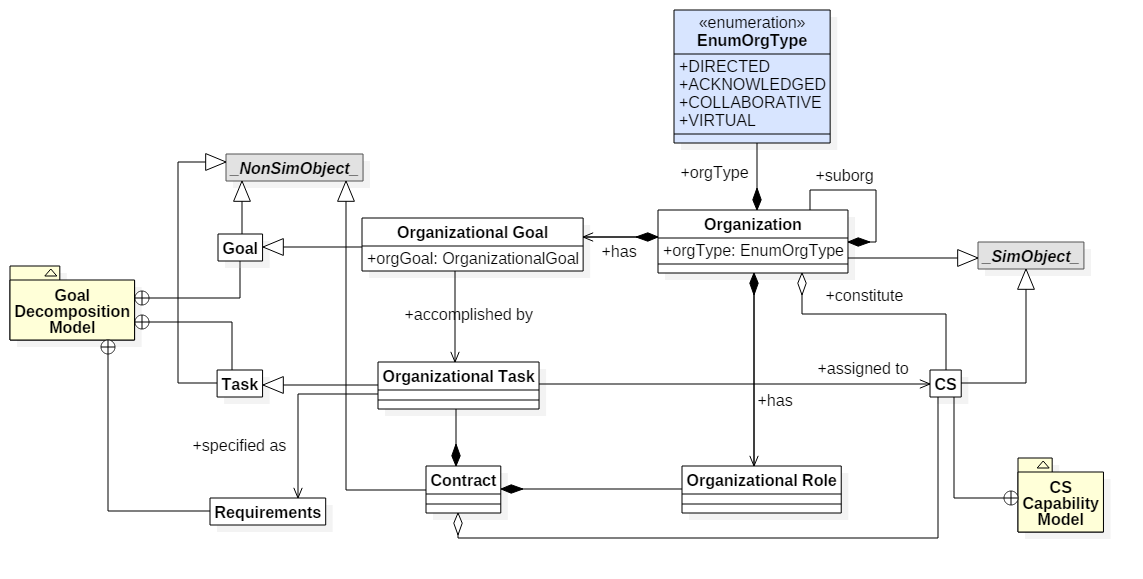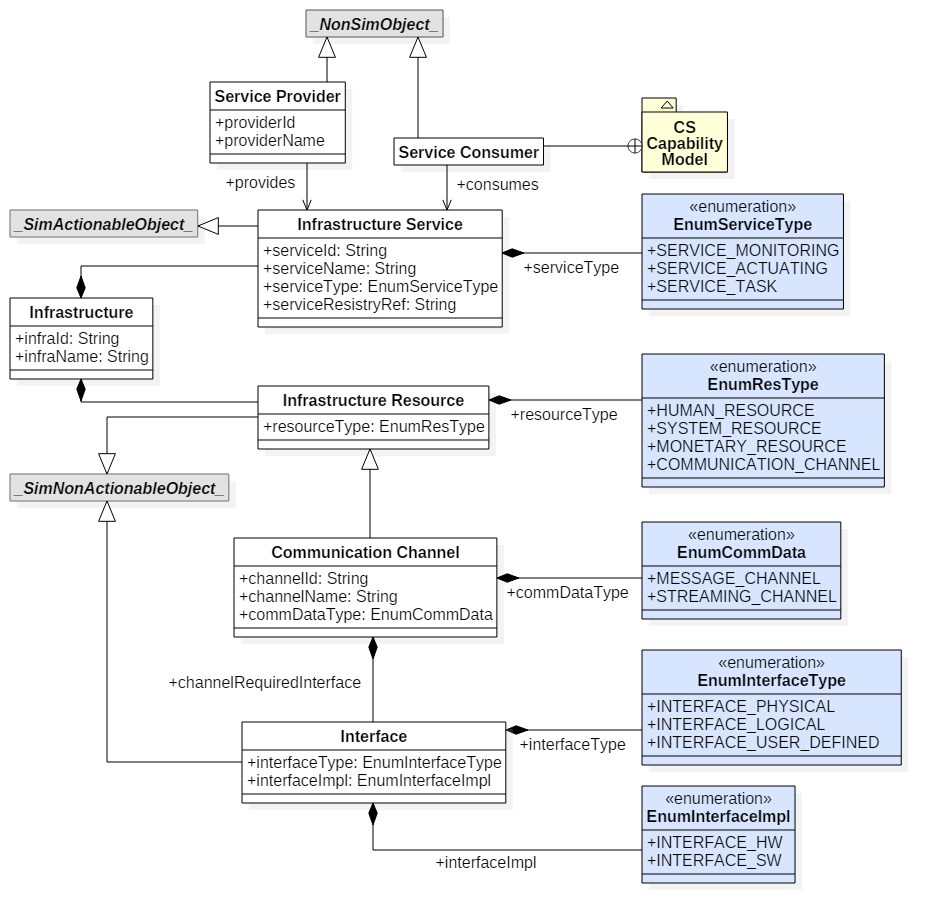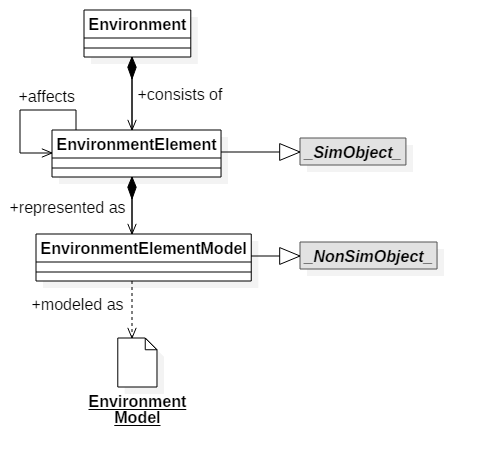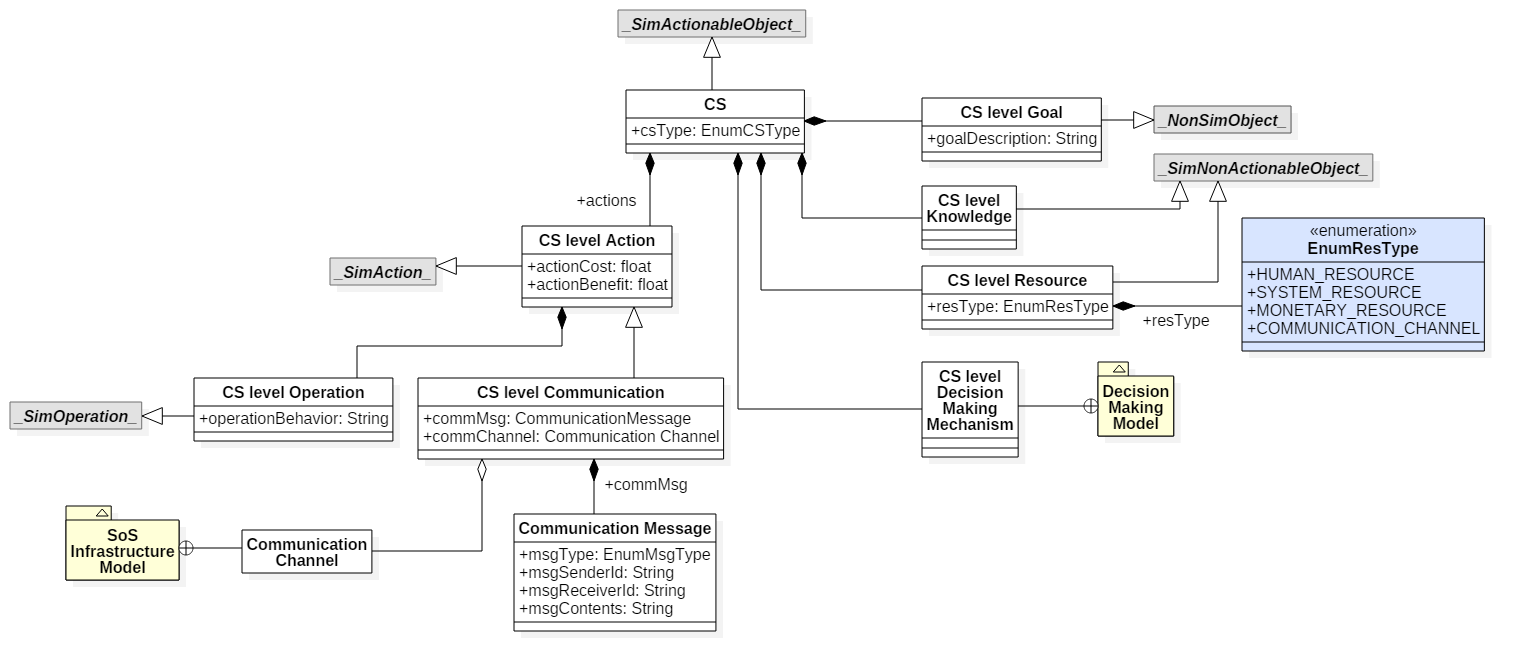Background
As a very first step for model-based SoS engineering (SoSE), a meta-model was developed (See [Link: M2SoS]). The name of the meta-model is M2SoS (Meta-model for SoS), and it provides a holistic high-level view of an SoS. Based on M2SoS, we develop a modeling language (ML) according to the class design of SIMVA-SoS (See [Link: SIMVA-SoS] to get information of SIMVA-SoS). In order to simulate input models, the ML should be consistent both with SIMVA-SoS class definition and with M2SoS concept definition.
In SIMVA-SoS, we can describe an overall logical architecture of SIMVA-SoS simulation as figure below. This figure shows how simulation models are hierarchically constructed and connected with each other. Also, this architecture describes overall simulation flow from the simulator (i.e., simulation engine) to component models.
Figure: Overall Architecture of SIMVA-SoS Simulation
According to the class definition of SIMVA-SoS, we identified several crucial model types to be defined as modeling languages. From this figure, we can find the hierarchy among SoS-level component models. Firstly, there are two SoS-level components, which are SoS and SoS Environment. An SoS object consists of its infrastructure, policy repository, and multiple organizations. An SoS Environment consists of several EnvironmentElement, which can represent various environmental factors or actors. Secondly, an SoS can be divided into multiple Organizations based on decomposed goals, and each Organization can include one or more CSs as member systems. Each Organization can have different policies, strategies, and membership to manage constituents’ operations and to achieve its own organizational goals or tasks. Thirdly, an SoS can construct its own infrastructure to efficiently (or effectively) improve accomplishment rate of SoS-level goals. For this purpose, an Infrastructure can have InfraServices and InfraResources, which can be utilized by SoS’s Organizations or CSs. Fourth part is a policy repository that manages SoS-level policies and several mechanisms for policy establishment, management, and enforcement. They exist as operational requirements during the SoS operations, and they are referenced by Organizations and CSs under specific conditions.
As described above, an Organization can consist one or more CSs as member systems to achieve organization-level goals and to perform organizational tasks based on CSs’ collaborations. In order to assign appropriate tasks and missions to CSs, information about CSs is needed. The most important attribute of a CS is capability, and it is represented as a set of Actions, Knowledge, and Resources. At a certain tick during the simulation, each CS has to select a set of available actions from all possible action set, and the decisions should be made based on its own CS-level knowledge and resources.
Overall Approach/Method
To develop a modeling method, we have to develop two components, which are a modeling technique and mechanisms & algorithms. A modeling technique consists of a modeling language, which represents a target object or phenomenon with notations, syntax, and semantics, and a modeling procedure, which describes specific steps for applying modeling language. ADOxx platform provides and supports the whole development method (or methodology) and it enables efficient development of a modeling tool. Basically, ADOxx supports metamodeling approaches, and we can develop (or define) a modeling language based on the metamodel. The figure below shows overall components of modeling methods.
Figure: Developing a modeling method [D. Karagiannis et al., 2002]
To develop a modeling method in SIMVA-SoS Modeler, we first defined 6 major model types to represent (model) SIMVA-SoS simulation models.
- Integration Model: This model integrates component entities of an SoS, and this model is basically constructed by referencing model instances of other model types.
- Goal Decomposition Model: This model defines requirements, tasks, services based on SoS-level common goals.
- Organization Model: This model defines an organization and its components (i.e., constituent systems), and this model also includes organization-level components such as contracts, roles, goals, tasks.
- CS Capability Model: This model represents a single CS and its features to be used for SoS integration. Thus, CS-level capability is the most important class of CS Capability Model, and CS-level resource, knowledge are also included.
- SoS Environment Model: This model represents an SoS-level environment comprising of several environmental elements.
- SoS Infrastructure Model: This model represents infrastructure services and resources to be used or accessed by SoS components.
Results
(1) Abstract classes
(2) Concrete classes
A. Integration Model
C. Organization Model
D. SoS Infrastructure Model
E. SoS Environment Model
F. CS Capability Model
Related Publications
- Young-Min Baek, Jiyoung Song, Yong-Jun Shin, Sumin Park, Doo-Hwan Bae, “A Meta-Model for Representing System-of-Systems Ontologies”, 6th International Workshop on Software Engineering for Systems-of-Systems (SESoS), 2018.
- Young-Min Baek, Sumin Park, Yong-Jun Shin, and Doo-Hwan Bae, “Development of Ontology-based System-of-Systems Meta-model Based on the Analysis of SoS Case Scenario”, Proceedings of the 20th Korea Conference on Software Engineering [KCSE 2018], No. 20, Issue. 1, pp.3-4, 2018.
- Young-Min Baek, Sumin Park, Yong-Jun Shin, and Doo-Hwan Bae,, “Development of Ontology-based System-of-Systems Meta-model Based on the Analysis of SoS Case Scenario,” KIISE Journal (Software and Application), 2018.
Related Tools
- SIMVA-SoS Modeler

